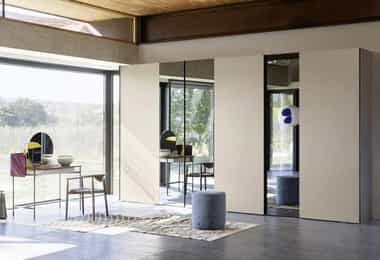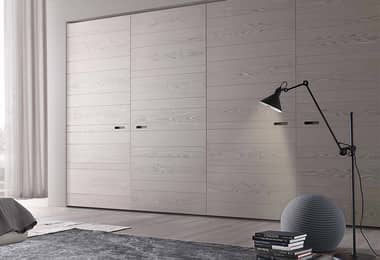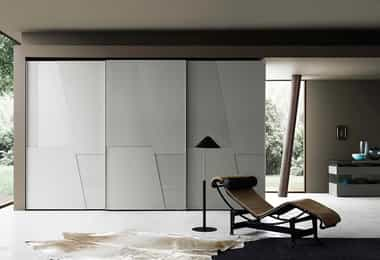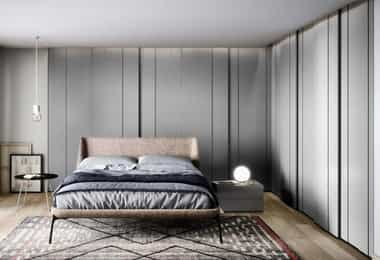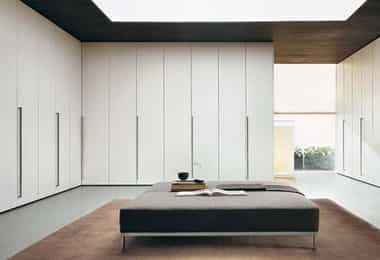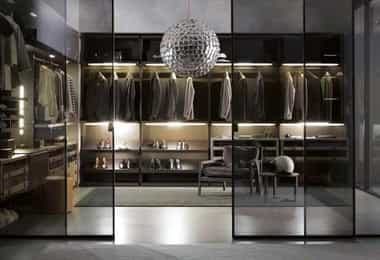The Difference Between Traditional and Modern Luxury Wardrobe Design
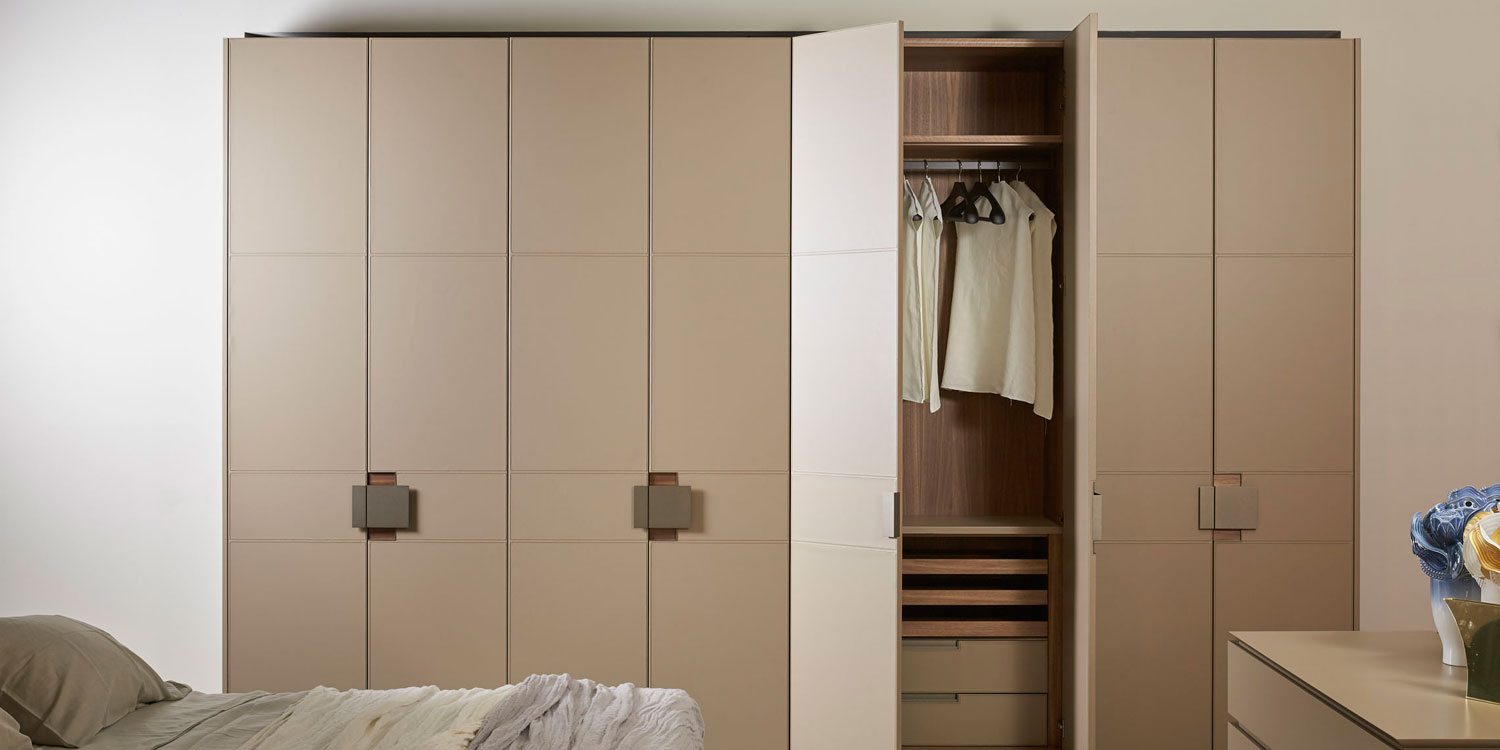
When discussing wardrobe design, there are two main styles to choose from - traditional and modern.
At FCI, we understand the importance of selecting a wardrobe that not only provides ample storage space but also complements the overall style of your room.
A wardrobe can serve as a centrepiece that ties the room together or fades into the background, providing a functional storage solution that doesn't detract from the rest of the space.
In this blog, we will explore the differences between traditional and modern luxury wardrobe designs and provide expert tips on choosing the perfect wardrobe for your home.
1. Definition and Explanation
The difference between traditional and modern luxury wardrobe design lies in their styles and aesthetics. Ornate details and intricate carvings typically characterise traditional wardrobe design, often made from high-quality natural materials such as wood. These wardrobes are usually large and imposing, making them an ideal statement piece for classic and opulent bedroom designs.
On the other hand, modern wardrobe design tends to feature clean lines, neutral colours, and a focus on function over form. These wardrobes are often more compact, with sliding doors or a hidden design, making them ideal for contemporary and minimalist bedroom designs where space is limited.
Both traditional and modern luxury wardrobe designs offer unique features that cater to different personal styles and preferences. Traditional wardrobes exude a sense of grandeur and elegance, while modern cabinets focus on practicality and simplicity.
Ultimately, the choice between traditional and modern luxury wardrobe design depends on personal preferences and the style of the room. Whether you prefer conventional ornate details or modern, sleek lines, a wardrobe is an excellent addition that provides storage and aesthetics to your room.
2. Materials and Craftsmanship
The materials and craftsmanship used in traditional and modern luxury wardrobe designs differ significantly. Traditional wardrobe designs often feature high-quality natural materials such as wood and are crafted with intricate details and carvings. Skilled artisans typically make these wardrobes using traditional techniques to create ornate designs that are beautiful and functional.
In contrast, manufacturers tend to make modern luxury wardrobe designs from a broader range of materials, including metals, glass, and plastic. Manufacturers often choose these materials for modern luxury wardrobe designs for their durability, versatility, and ease of maintenance. Modern wardrobe designs often prioritise function and minimalism over ornate details and are typically produced with a greater emphasis on precision and efficiency.
Craftsmanship also differs between traditional and modern wardrobe designs. Traditional wardrobe designs require skilled artisans who use specialised tools and techniques to create intricate designs. In contrast, manufacturers often produce modern wardrobe designs using machinery and computer-aided design programs that enable precision and efficiency in manufacturing.
Our showroom in London showcases a range of luxury wardrobe designs that cater to different styles and preferences. Combine traditional and modern elements to create a beautiful and functional wardrobe. Our expert design team is always available to guide you through the selection process and help you find the perfect wardrobe for your bedroom.
We are fanatical about luxury fitted wardrobe design.
Take a look at our range of contemporary wardrobes.
Talk to a wardrobe expert now or book an appointment.

Book A Video Chat
Book a zoom consultation and we’ll advise you on furniture, space planning, wardrobes and more.
Book A Video Chat
Book A Showroom Visit
Let our experts guide you through our 30,000 sq. ft. showroom with over 700 luxury brands under 1 roof.
Book A Consultation
Email, call or book a virtual video chat with our sales team. Ask questions with no obligations.
Chat Now3. Design and Style
Traditional wardrobes are typically more ornate than minimalist wardrobes. They often feature intricate details such as carvings and embellishments of wood, glass, and metal.
Traditional cabinets may also have more compartments and drawers, allowing for storage space. The cherry and mahogany colours and finishes are often rich and warm, giving a sense of luxury and opulence.
In contrast, minimalist wardrobes are all about simplicity and functionality. They tend to have clean lines with little to no ornamentation. Minimalist wardrobes are often smaller and more compact than traditional wardrobes, focusing on providing ample storage space without taking up too much room.
They typically have fewer compartments and drawers but with a focus on maximising vertical space. The colour palette used in minimalist wardrobe designs is often more neutral, with white, black, and grey being popular choices.
At FCI, we understand that traditional and minimalist wardrobes have unique advantages and disadvantages. That's why we offer a range of luxury wardrobe designs that borrow from the influences of both styles, allowing you to choose a wardrobe that meets your specific needs and complements your bedroom design.
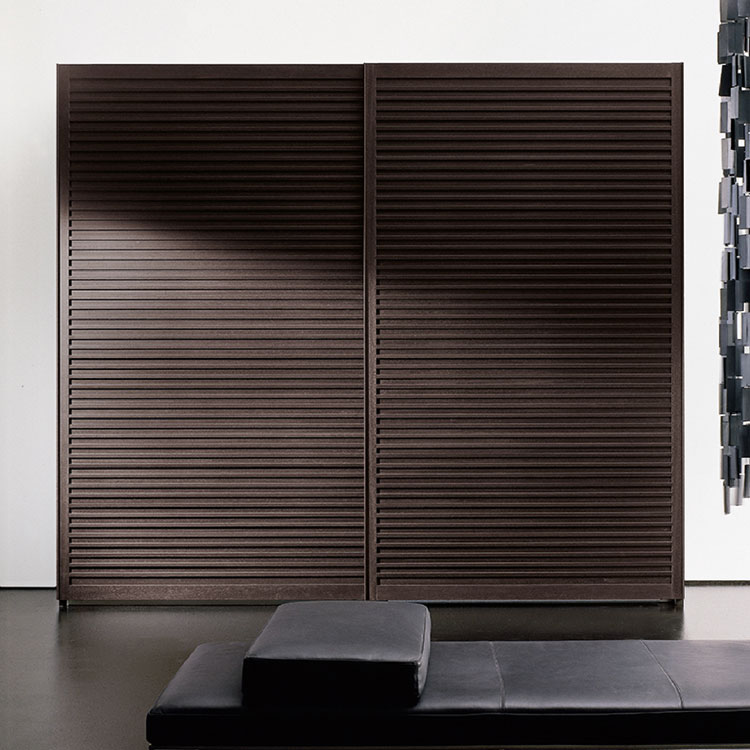
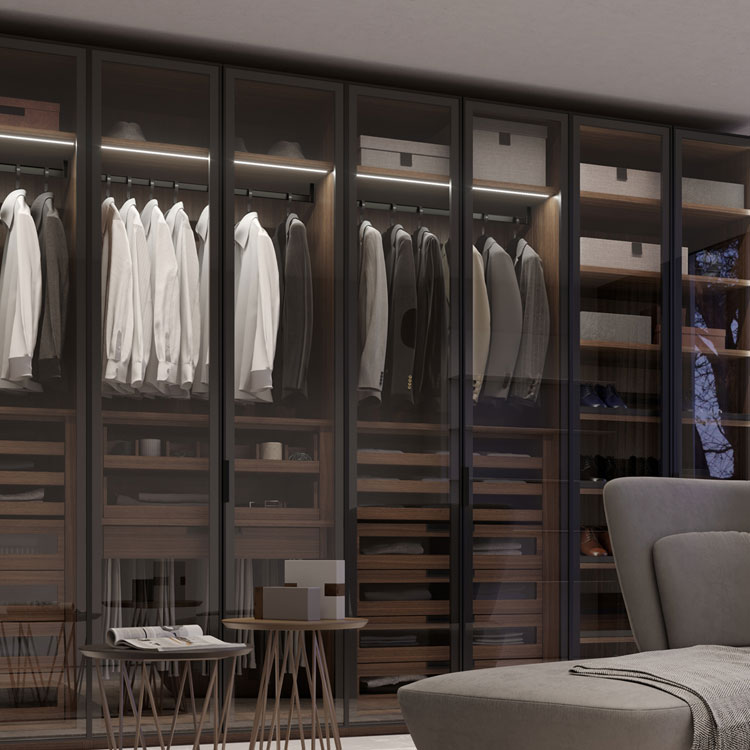
Traditional wardrobes on the FCI website include the Mary Hinged Door Wardrobes by Tonin Casa, which features a classic design with natural materials and brass handles. In contrast, Wardrobe Design # 15 by Logo has a minimal design with sliding doors and a focus on vertical space.
4. Functionality and Technology
When it comes to functionality and technology, traditional and modern luxury wardrobe designs differ significantly. Here are some key differences:
Storage Space
- Traditional wardrobes often have more compartments and drawers, providing ample storage space for clothing and accessories.
- On the other hand, modern wardrobes tend to be more compact and efficient, focusing on maximising vertical space and minimising wasted space.
Accessibility
- Traditional wardrobes often have hinged doors that swing open, requiring more clearance space to access the contents.
- Modern wardrobes often have sliding doors or a hidden design, allowing for easier access and a more streamlined appearance.
Lighting
- Traditional wardrobes often incorporate interior lighting, showcasing the wardrobe's contents and adding a sense of luxury.
- Modern wardrobes may also incorporate interior lighting but often prioritise energy efficiency and innovative home technology.
Security
- Traditional wardrobes often feature locking mechanisms, providing an extra layer of security for valuable items.
- Modern wardrobes may incorporate biometric locks, intelligent home integration, or other advanced security features.
At FCI, we understand that functionality and technology are essential considerations when choosing a storage solution for your home. That's why our expert team can guide you through the selection process. Schedule an appointment with us, and we will help you find a wardrobe that meets your preferences and delivers the required features.
5. Aesthetics and Artistry
Regarding aesthetics and artistry, traditional and modern luxury wardrobe designs have unique characteristics. Here are some key differences:
Ornamentation and Detailing
- Traditional wardrobe designs often incorporate ornate details such as curved legs, embellished handles, and decorative mouldings.
- Modern wardrobe designs, in contrast, often prioritise simplicity and minimalism, with clean lines and minimal ornamentation.
Colour and Finish
- Traditional wardrobe designs often feature rich colours and finishes, such as cherry, mahogany, and walnut.
- On the other hand, modern wardrobe designs often have a more neutral colour palette, with white, black, and grey being popular choices.
Material and Texture
- Manufacturers often make traditional wardrobe designs from natural materials such as wood, focusing on showcasing the natural grain and texture of the material.
- On the other hand, modern wardrobe designs may incorporate a broader range of materials, such as glass, metal, and plastic, focusing on creating unique textures and finishes.
Artistry
- Skilled artisans craft traditional wardrobes using specialised tools and techniques to create intricate designs.
- Manufacturers produce modern wardrobes using machinery and computer-aided design programs that enable precision and efficiency in manufacturing.
Whether you opt for a traditional or modern look, we give you the freedom to select specifications for every aspect of your unit. Take a close look at your home's overall aesthetic and determine which details your wardrobe should have to integrate into your living space seamlessly.
6. Sustainability and Environmental Impact
In recent years, sustainability and environmental impact have become essential considerations for many consumers when purchasing luxury furniture. Here are some key differences between traditional and modern luxury wardrobe designs in terms of sustainability and environmental impact:
Materials
- Manufacturers typically make traditional wardrobes from high-quality natural materials such as wood, which are sustainably sourced if harvested responsibly.
- Modern wardrobes often incorporate a more comprehensive range of materials, some of which may not be environmentally friendly.
Manufacturing
- Crafting traditional wardrobes requires traditional techniques that consume a lot of energy resulting in a significant amount of waste.
- Manufacturers produce modern wardrobes using more efficient methods that reduce energy consumption.
Durability
- Manufacturers make traditional wardrobes from high-quality materials designed to last many years.
- Manufacturers make modern wardrobes from less durable materials, which may require more frequent replacements.
Recycling and Disposal
- Traditional wardrobes are easier to recycle or dispose of because they contain natural materials.
- Modern wardrobes may be made from materials that are more difficult to recycle or dispose of, contributing to the overall environmental impact.
At FCI, we are committed to sustainability and reducing our environmental impact. That's why we offer a range of luxury wardrobe designs that prioritise sustainability and environmental friendliness.
We make our wardrobes from sustainably sourced wood or those produced using efficient manufacturing methods. Our customers value functionality and sustainability, and we strive to provide luxury wardrobe designs that meet both needs.
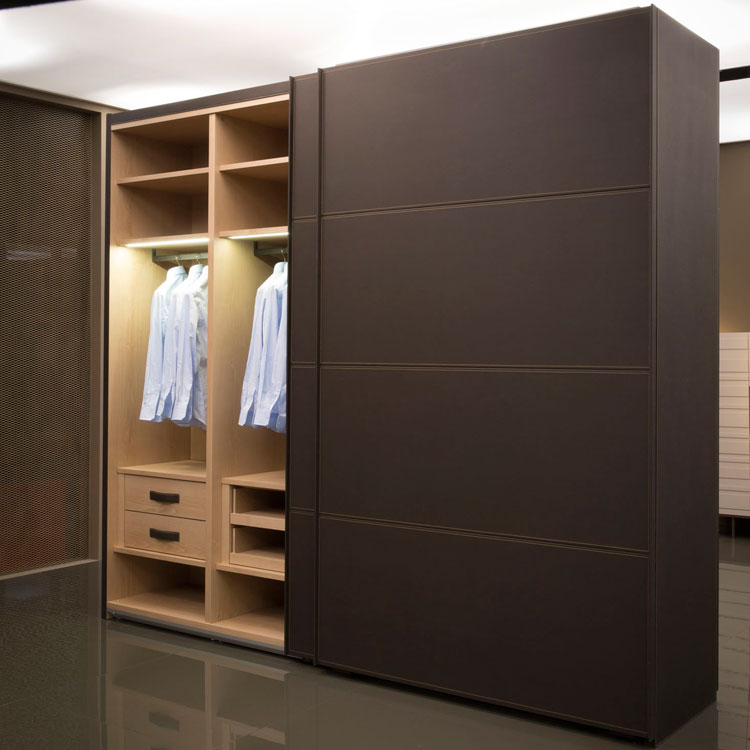
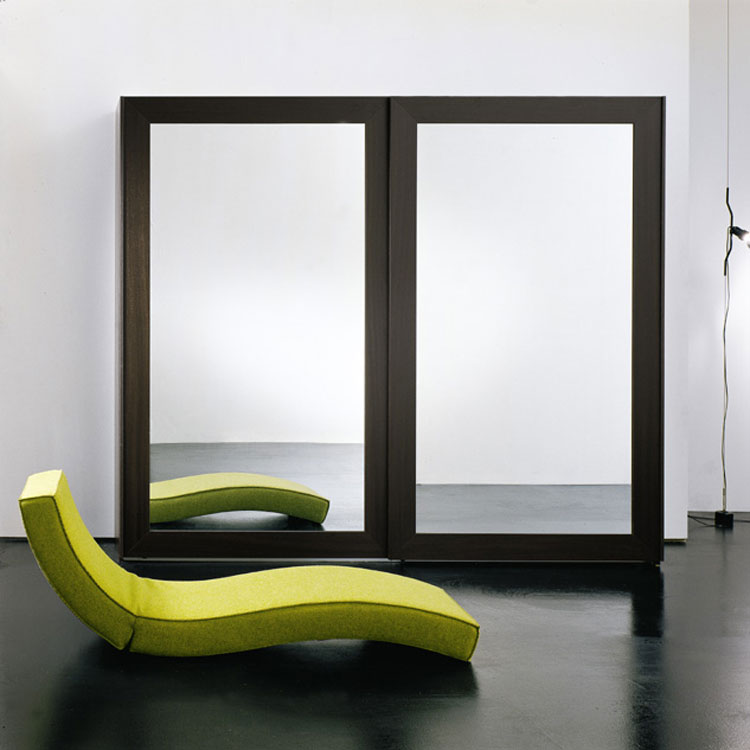
7. Cost and Affordability
Cost and affordability for traditional and modern luxury wardrobe designs vary significantly. Traditional wardrobes often use high-quality natural materials such as wood and require skilled craftsmanship, which can drive up the cost. They also have a more elaborate design, which can require more materials and labour to produce, making them more expensive.
On the other hand, modern wardrobes may use a wide range of materials and manufacturing methods that are more efficient and cost-effective. They also tend to have a more minimalist and streamlined design, which reduces the cost of materials and labour. However, they tend to include advanced technology and specifications, which can increase their price.
In addition to materials and craftsmanship, brand and reputation can also play a role in the cost and affordability of luxury wardrobe designs. Traditional luxury furniture brands often have a long-standing reputation for quality and craftsmanship, which can make their products more expensive. Modern luxury furniture companies might be budget-friendlier because they're newer on the market and don't need to uphold a reputation.
To help you plan your budget for our designs, we offer a cost calculator on our website that provides a free instant quote. The estimate allows you to understand the costs associated with different luxury wardrobe designs and make an informed decision based on your budget and needs. Our expert team also works with you to customise your luxury wardrobe design to fit your budget without sacrificing quality or functionality.
8. Cultural and Historical Context
When it comes to cultural and historical context, traditional and modern luxury wardrobe designs differ significantly. Traditional wardrobe designs often draw inspiration from historical styles and cultural influences that reflect the heritage and traditions of a particular region or country.
These designs may incorporate symbolic or meaningful motifs with cultural or historical significance, such as traditional patterns or motifs that reflect religious or spiritual beliefs. In terms of materials and craftsmanship, traditional wardrobe designs often prioritise high-quality natural materials and skilled craftsmanship, which can reflect a deep respect for tradition and heritage.
On the other hand, modern wardrobe designs may incorporate more contemporary design influences from a broader range of cultural and historical contexts. They focus more on functionality and aesthetics, with less emphasis on symbolic or meaningful design elements. This style is evident in our recent installations, which showcase the understated beauty of contemporary storage.
In terms of materials and manufacturing methods, modern wardrobe designs may incorporate a broader range of materials and manufacturing methods, reflecting a more contemporary approach to design and production.
9. Popularity and Market Trends
With the popularity and market trends, traditional and modern luxury wardrobe designs can differ significantly. Traditional wardrobe designs have been popular for centuries and have a long-standing reputation for quality, craftsmanship, and beauty.
They might incorporate modest modifications on time-honoured design trends in vogue for many years. These wardrobes often appeal to consumers who value heritage and tradition and are willing to invest in high-quality luxury furniture.
On the other hand, modern wardrobe designs have gained popularity in recent years as consumers have become increasingly interested in minimalist and contemporary styles. They may incorporate more cutting-edge design trends that reflect current styles and preferences.
Modern wardrobe designs often appeal to consumers who value innovation and functionality and are interested in keeping up with the latest design trends.
Our team of experts can help guide you through the selection process and provide insight into the latest design trends and market demands, ensuring you discover a luxury wardrobe that is attractive, useful, and consistent with trends.
10. Future of Luxury Wardrobe Design
Regarding the future of luxury wardrobe design, traditional and modern designs will continue to evolve and adapt to changing trends and consumer preferences. Here are some potential ways that traditional and contemporary luxury wardrobe designs may develop in the future:
Sustainability and Eco-Friendliness
- As environmental concerns become more pressing, wardrobe designers will prioritise sustainability and eco-friendliness, incorporating materials and production with a minimal ecological impact.
- Wardrobe brands will continue to explore innovative materials and manufacturing methods that are more eco-friendly, such as recycled materials and 3D printing.
Integration with Technology
- Manufacturers will continue integrating with technology to provide a more seamless and intuitive user experience. We expect to see features such as built-in lighting, digital interfaces, and intelligent storage solutions.
- Traditional wardrobe designs may incorporate technology more subtly, such as hidden compartments or integrated charging ports.
- Modern wardrobe designers will explore more advanced technological solutions, such as automated storage and retrieval systems or integrated AI assistants.
Customisation and Personalisation
- Luxury wardrobes will become more customisable and personalised to meet individual consumers’ unique needs and preferences. It could include modular designs, interchangeable components, and bespoke finishes.
- Modern closets will incorporate flexibility and adaptability, with modular designs and customisable features that can be easily changed or updated over time.
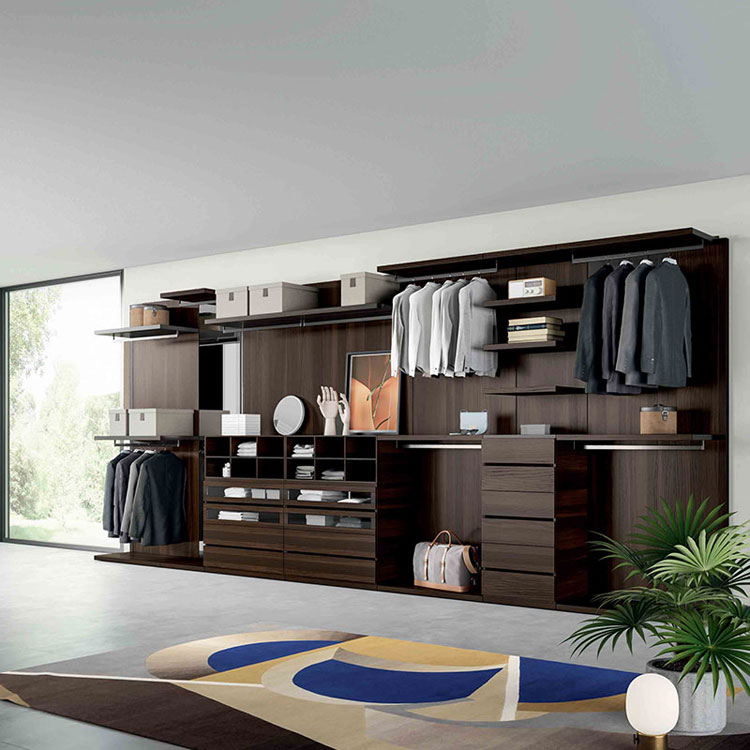
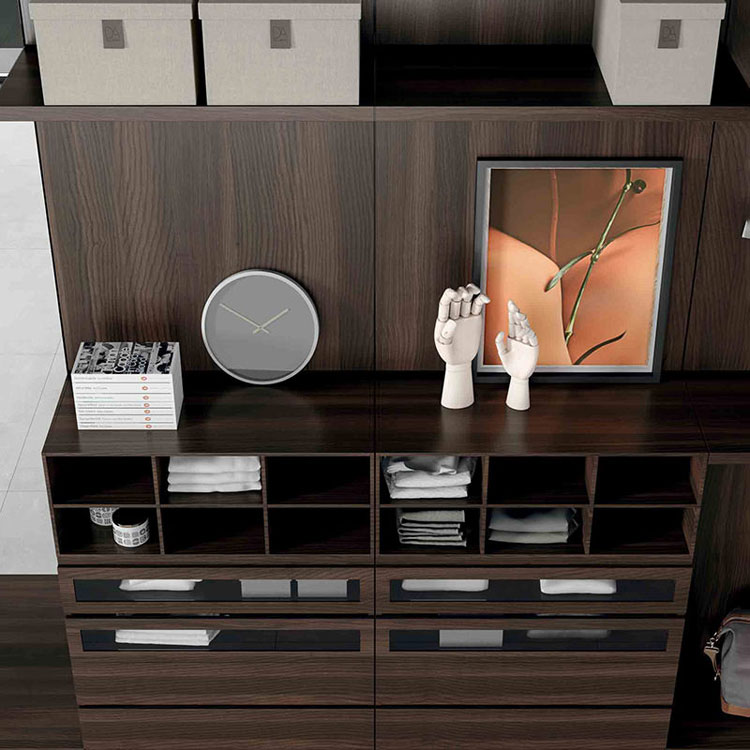
At FCI, we are committed to staying at the forefront of luxury furniture design. We provide our customers with the latest and greatest in luxury wardrobe design.
Whether you're looking for a traditional or modern luxury wardrobe design, our team of experts can help you find a wardrobe that meets your unique preferences and needs. We incorporate the latest design trends and technological advancements into our designs.
We are excited to see how luxury wardrobe design will continue to evolve in the future, and we look forward to being a part of that evolution.
In Conclusion
In conclusion, luxury wardrobe design is an art form that has evolved significantly over the years. While traditional and modern luxury wardrobe designs have unique differences, styles offer exceptional quality, craftsmanship, and functionality.
At FCI, we pride ourselves on our ability to offer a wide range of luxury wardrobe designs that cater to traditional and modern styles while staying on top of the latest market trends. Our decades of experience in furniture design have taught us to appreciate the value of bespoke and customisable designs.
Our expert team is always ready to help you create a wardrobe tailored to your unique style and needs. We encourage you to visit our London showroom to explore our extensive collection of designer wardrobes and experience the FCI difference for yourself. Get in touch today to see how we can help you transform your storage solution into a work of art.
Get In Touch
Book A Video Chat
Book a video consultation and we'll advise you on furniture, space planning, colour schemes and much more.
Book A ConsultationVisit Our Showroom
Book a visit to our stunning, multi award-winning, 30,000 sqft.
Over 700 brands under 1 roof.
Sign up for weekly inspiration
Stay ahead of the crowd with our Interior Design inspiration, new furniture trends & trade tips.
Related Blog Articles
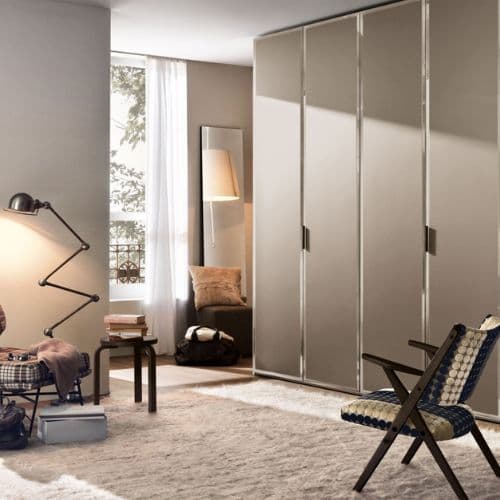 Luxury Wardrobe Design Innovations in the Digital Age06-Apr-2024
Luxury Wardrobe Design Innovations in the Digital Age06-Apr-2024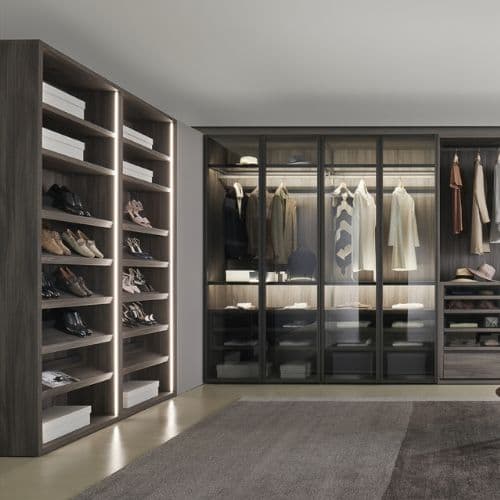 Benefits Of Having a Floor-To-Ceiling Wardrobe13-Mar-2024
Benefits Of Having a Floor-To-Ceiling Wardrobe13-Mar-2024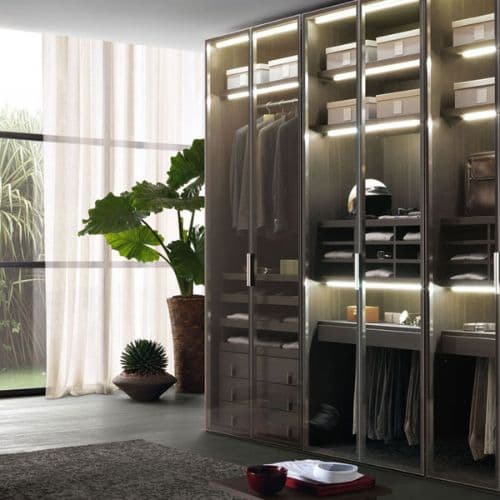 The Latest Trends in Luxury Wardrobe Lighting08-Mar-2024
The Latest Trends in Luxury Wardrobe Lighting08-Mar-2024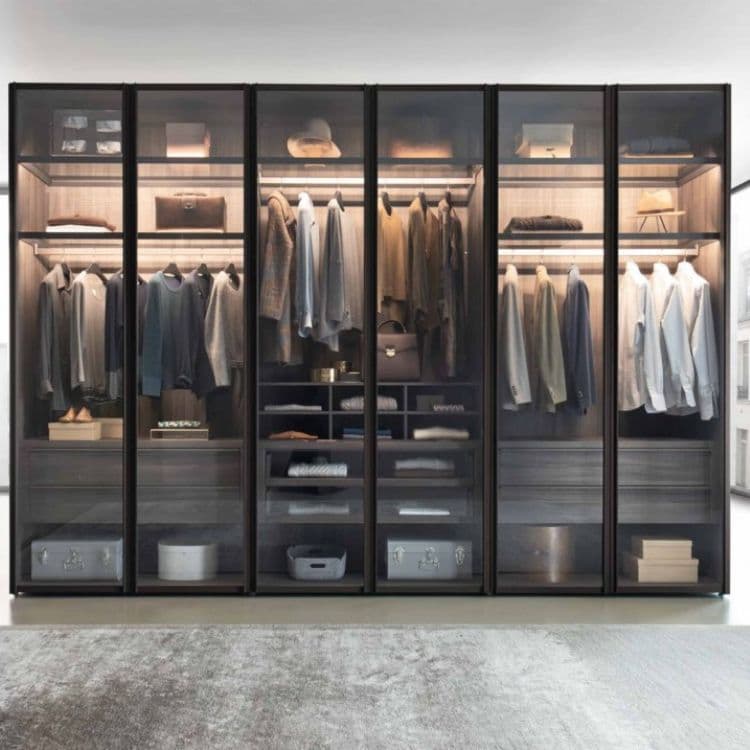 Should I Decorate Before or After Fitted Wardrobes?28-Feb-2024
Should I Decorate Before or After Fitted Wardrobes?28-Feb-2024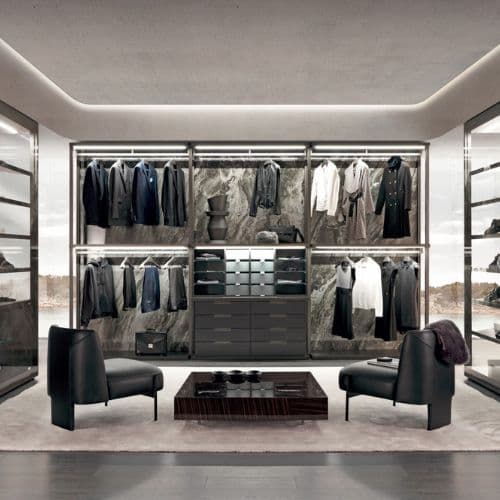 What Can I Put In My Wardrobe To Stop Damp?28-Jan-2024
What Can I Put In My Wardrobe To Stop Damp?28-Jan-2024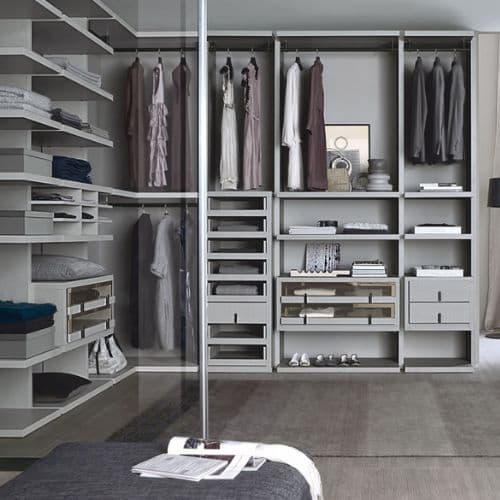 How do I Stop Mould in My Walk-In Wardrobe? 7 Simple Tips17-Jan-2024
How do I Stop Mould in My Walk-In Wardrobe? 7 Simple Tips17-Jan-2024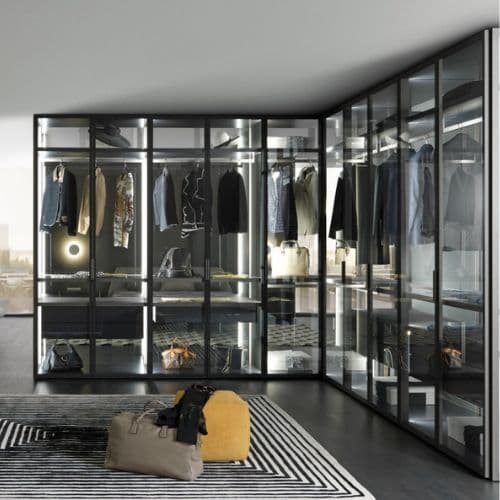 Should You Have Backs on Fitted Wardrobes?23-Dec-2023
Should You Have Backs on Fitted Wardrobes?23-Dec-2023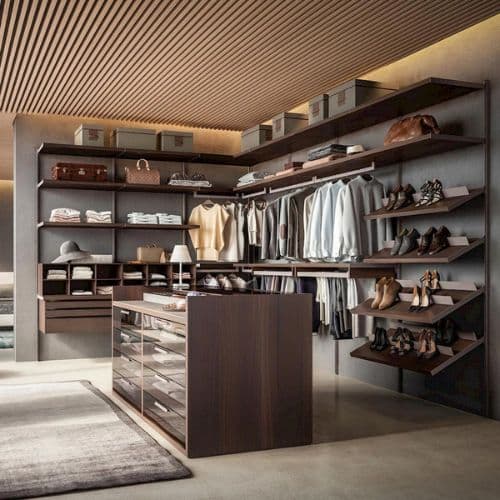 Where Should a Mirror Be Placed In a Walk-in Closet?23-Dec-2023
Where Should a Mirror Be Placed In a Walk-in Closet?23-Dec-2023
Most Popular on FCI London: Fitted Wardrobes | Luxury Designer Rugs | Luxury Sofas | Luxury Furniture Store | Luxury Interior Designers
Transparency's kind of our thing.
Here's what real customers have to say about us.


